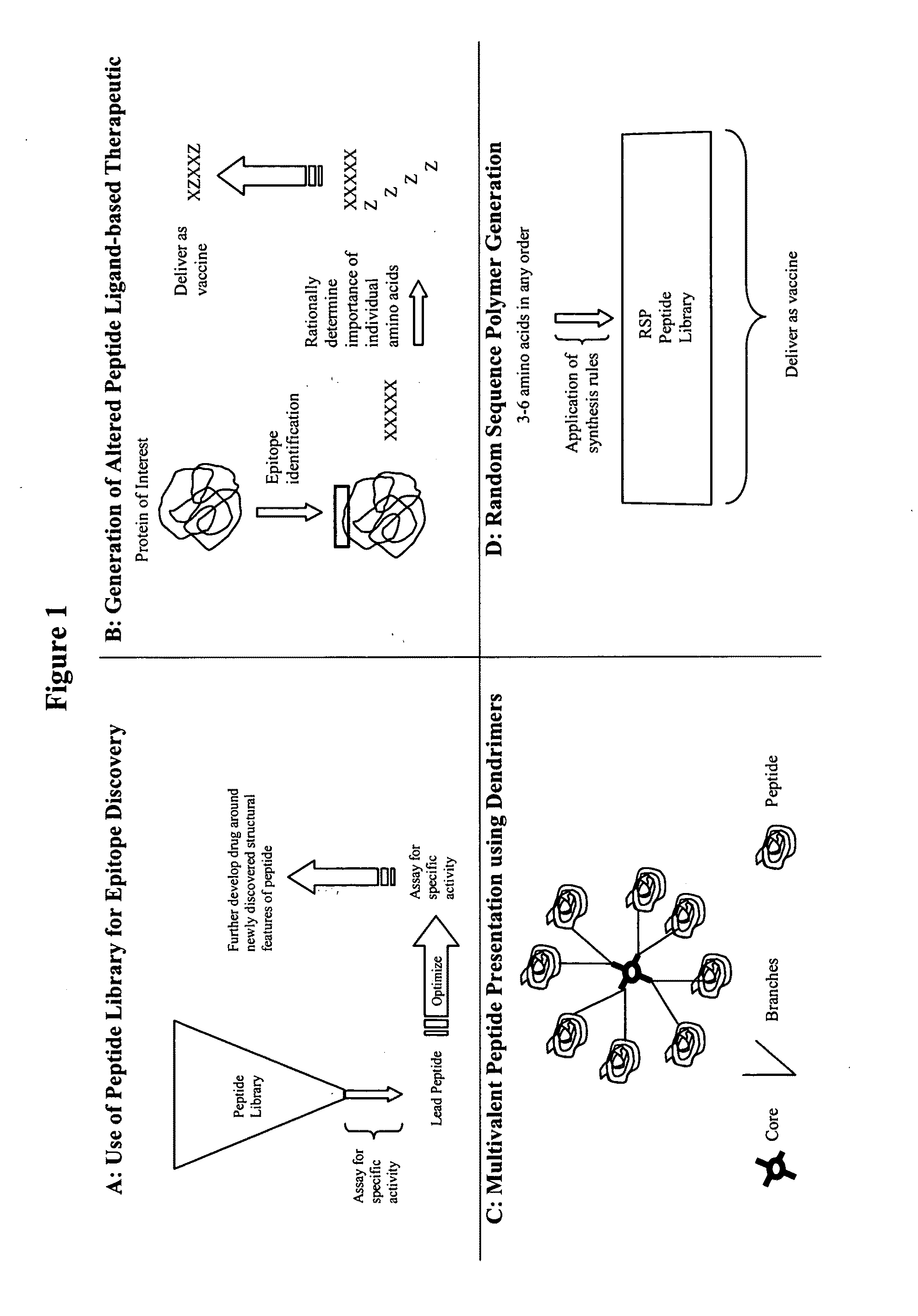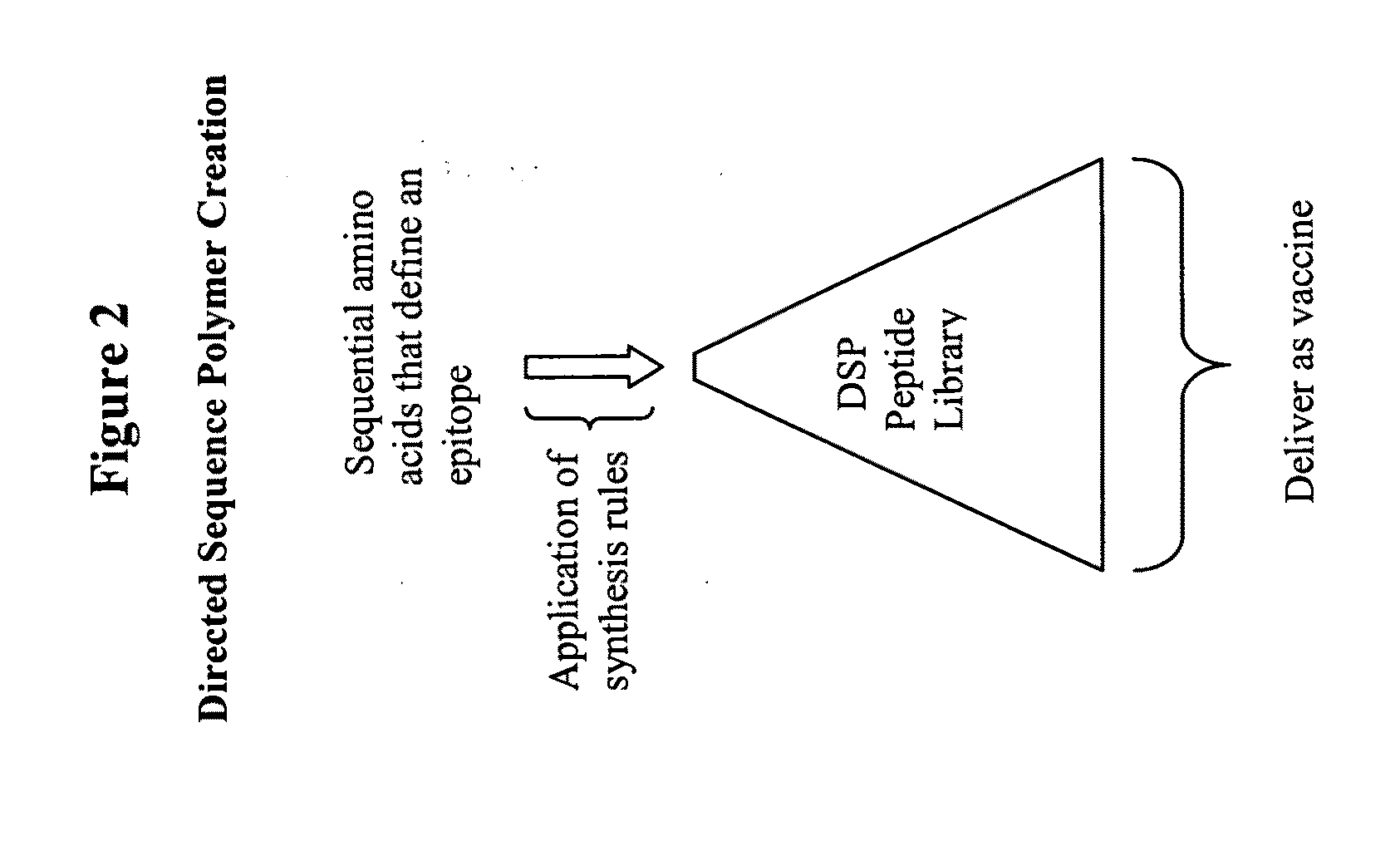Methods for designing and preparing vaccines comprising directed sequence polymer compositions via the directed expansion of epitopes
a technology of epitope expansion and polymer composition, which is applied in the direction of antibody medical ingredients, peptide sources, immunological disorders, etc., can solve the problems of infectious diseases that are generally refractory to traditional vaccine therapies, peptide-based approaches, and damage to the hos
- Summary
- Abstract
- Description
- Claims
- Application Information
AI Technical Summary
Benefits of technology
Problems solved by technology
Method used
Image
Examples
example 1
Preparation of a DSP Composition from Fictitious Base Peptides
[0159]For ease of understanding, as an illustration, preparation of a DSP composition deriving from two fictitious peptide sequences, representing a known epitope, is described and shown in the table depicted in FIG. 6. In this illustration, the cassettes consist of five amino acids each, (×1, ×2, ×3, ×4, ×5=THMCE in y1 and PWKNA in y2). THMCE is defined as having an input ratio of a=7, b=1, c=1, d=1, e=10. PWKNA is defined as having an input ratio of a=1, b=3, c=3, d=3, e=20. For synthesis, the identity of group of amino acids occupying each amino acid position for each peptide is determined using the preferred method of amino acid substitution described by Kosiol et al., J. Theoretical Biol. 228:97-106, 2004, as shown in FIG. 4 (or less preferably an equivalent means of systematically altering amino acids), and the overall ratio of amino acids that occupy each of such positions in the resulting collective DSP compositio...
example 2
Preparation of a DSP Composition from Influenza Hemagglutinin Epitope as a Source Peptide
[0161]As a starting point, a hemagglutinin sequence of a strain of influenza A subtype H5N1 avian flu virus isolated from an infected human, A / Egret / Egypt / 1162 / NAMRU-3 / 06, is chosen (Steven J et al., J Mol Biol, 2008 381:1382-94). The ascension number, ACD62257, and sequence, SEQ ID No: 15, is found using the database: http: / / www.ncbi.nlm.nih.gov / genomes / FLU / Database / multiple.cgi. A 3D protein structure is created using RasMol (http: / / rasmol.org / ), or an equivalent, after obtaining a model using ModBase (Nucleic Acids Research 34, D291-D295, 2006), or an equivalent comparative modeling database. A BLAST search is performed, (http: / / www.ncbi.nlm.nih.gov / sutils / blast_table.cgi?taxid=11308&selectall), using the advanced BLAST to retrieve a maximum number of sequences, in order to identify homologous influenza A, B, or C variants. A phylogenic tree is created using fast minimum evolution, 0.85 maxim...
PUM
 Login to View More
Login to View More Abstract
Description
Claims
Application Information
 Login to View More
Login to View More - R&D
- Intellectual Property
- Life Sciences
- Materials
- Tech Scout
- Unparalleled Data Quality
- Higher Quality Content
- 60% Fewer Hallucinations
Browse by: Latest US Patents, China's latest patents, Technical Efficacy Thesaurus, Application Domain, Technology Topic, Popular Technical Reports.
© 2025 PatSnap. All rights reserved.Legal|Privacy policy|Modern Slavery Act Transparency Statement|Sitemap|About US| Contact US: help@patsnap.com



